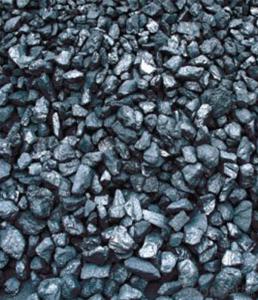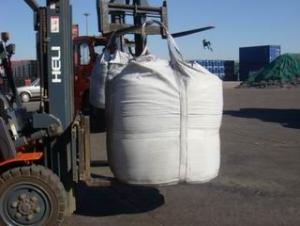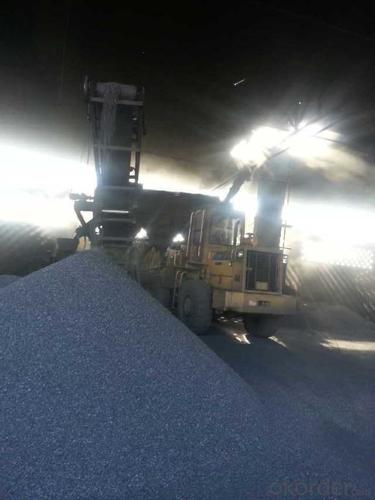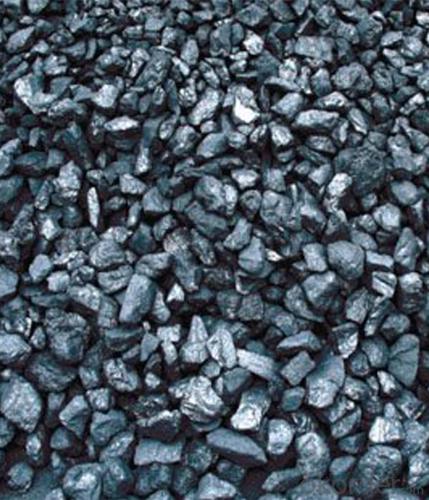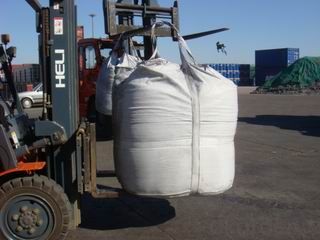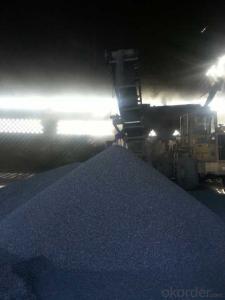FC 90% Carbon additive
- Loading Port:
- China Main Port
- Payment Terms:
- TT OR LC
- Min Order Qty:
- -
- Supply Capability:
- -
OKorder Service Pledge
OKorder Financial Service
You Might Also Like
Specifications
Calcined Anthracite
Fixed carbon: 90%-95%
S: 0.5% max
Size: 0-3. 3-5.3-15 or as request
Calcined Anthracite is produced using the best Anthracite-Taixi Anthracite with low S and P, It is widely used in steel making and casting, Chemical and some other fields.
General Specification of Calcined Anthracite:
PARAMETER UNIT GUARANTEE VALUE | |||||
F.C.% | 95MIN | 94MIN | 93MIN | 92MIN | 90MIN |
ASH % | 4MAX | 5MAX | 6MAX | 7MAX | 8MAX |
V.M.% | 1 MAX | 1MAX | 1.5MAX | 1.5MAX | 1.5MAX |
SULFUR % | 0.5MAX | 0.5MAX | 0.5MAX | 0.5MAX | 0.5MAX |
MOISTURE % | 0.5MAX | 0.5MAX | 0.5MAX | 0.5MAX | 0.5MAX |
Size can be adjusted based on buyer's request.
Pictures of Calcined Anthracite:

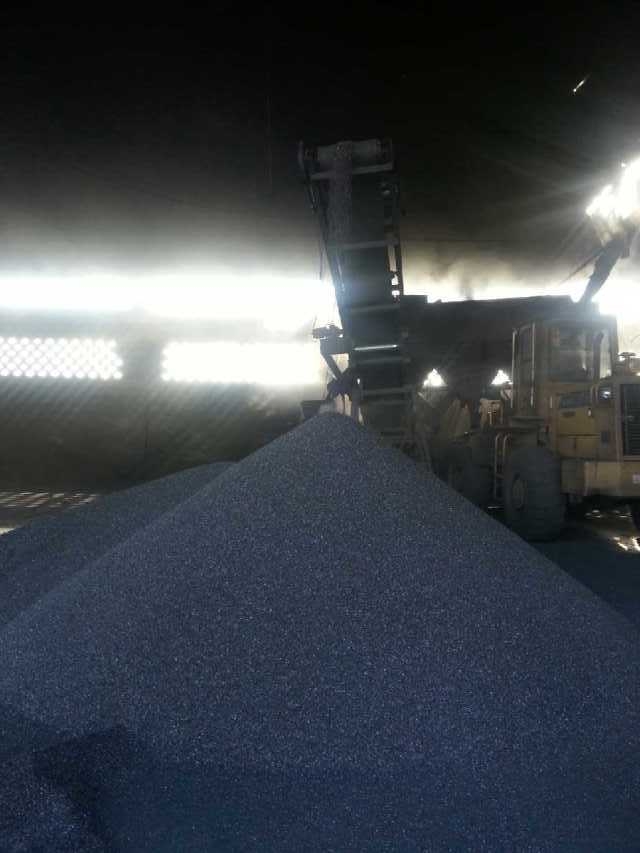
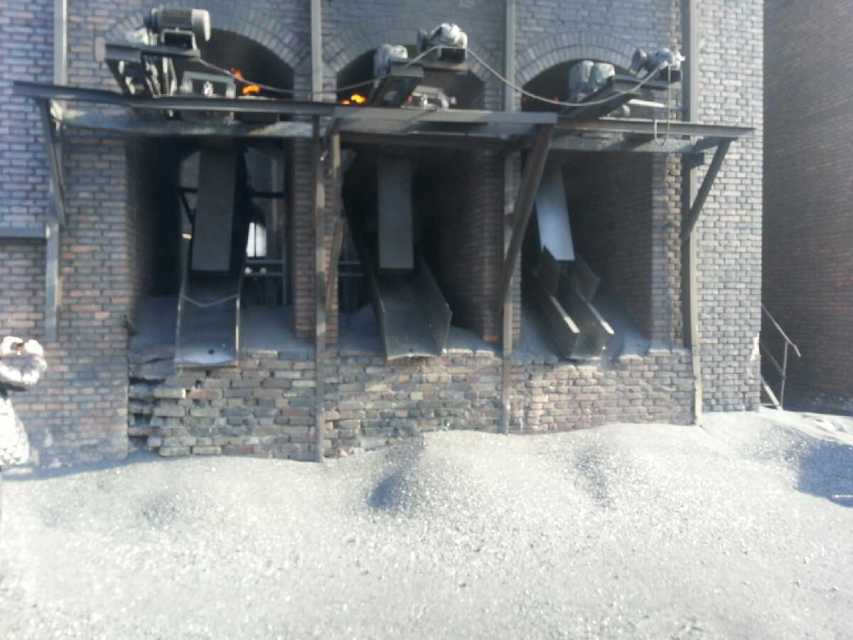
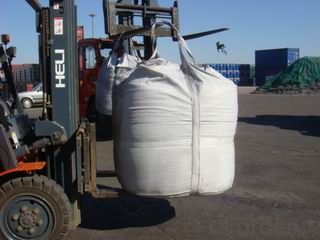
We can supply below furnace charges, please feel free to contact us if you areinterested in any of any of them:
Coke (Metallurgical, foundry, gas)
Calcined Anthracite with fixed carbon from 90% to 95%
- Q: What is the role of carbon in the corrosion of metals?
- Carbon can play a significant role in the corrosion of metals by acting as a catalyst or an electrolyte. It can accelerate the corrosion process by promoting the formation of corrosive substances such as carbonic acid or carbon dioxide. Additionally, carbon can act as an electrolyte in certain environments, facilitating the flow of electrons and ions between the metal and the surrounding medium, thus enhancing corrosion.
- Q: What is carbon nanosensor?
- A carbon nanosensor is a type of sensor that utilizes carbon-based materials at the nanoscale to detect and measure various substances or physical properties. These sensors are extremely small and have a high sensitivity, allowing them to detect even minute amounts of target molecules or changes in their environment. Carbon nanosensors can be engineered to target specific molecules or properties by functionalizing the surface of the carbon nanomaterials with specific receptors or probes. Additionally, carbon nanosensors can be integrated with other technologies, such as electronics, to enable real-time monitoring and data analysis. The unique properties of carbon nanomaterials, such as their high surface area, electrical conductivity, and chemical stability, make them ideal for constructing sensitive and versatile sensors in a wide range of applications, including environmental monitoring, medical diagnostics, and food safety.
- Q: The home wants to install electricity to warm the floor, the metal heating cable certainly won't use to have radiation, but is carbon system carbon fiber good or carbon crystal good?
- South Korea has a long history of electric heating, there is no domestic manufacturers have such technology! "Carbon crystal" is in the past two years, the domestic suddenly came out, it is estimated that dozens of homes!
- Q: What are the properties of carbon nanotubes?
- Carbon nanotubes are cylindrical structures made entirely of carbon atoms. They have a unique set of properties that make them highly desirable in various fields of science and technology. Some of the key properties of carbon nanotubes include: 1. Exceptional strength and stiffness: Carbon nanotubes have an incredibly high strength-to-weight ratio, making them one of the strongest materials known to date. They are about 100 times stronger than steel but much lighter. This property makes them suitable for applications requiring lightweight but strong materials. 2. High electrical conductivity: Carbon nanotubes possess excellent electrical conductivity, allowing them to efficiently carry electrical current. They can be utilized as conductive components in various electronic devices, such as transistors, sensors, and energy storage systems. 3. Thermal conductivity: Carbon nanotubes exhibit high thermal conductivity, meaning they can efficiently conduct heat. This property makes them ideal for applications requiring efficient heat dissipation, such as thermal management in electronic devices. 4. Flexibility and resilience: Carbon nanotubes are highly flexible and can withstand significant deformation without breaking. They can be bent and twisted without losing their structural integrity, making them suitable for applications requiring flexibility, such as flexible electronics. 5. Unique optical and mechanical properties: Carbon nanotubes possess unique optical properties that vary depending on their structure and arrangement. They can absorb and emit light across a wide range of wavelengths, making them useful in applications like photodetectors and solar cells. Additionally, their mechanical properties, such as the ability to deform elastically, make them useful in applications requiring shock absorption and impact resistance. 6. Chemical stability: Carbon nanotubes are highly chemically stable, which means they can resist degradation or corrosion when exposed to various chemical environments. This property makes them suitable for applications in harsh conditions or as protective coatings. 7. Large aspect ratio: Carbon nanotubes have a high aspect ratio, with lengths often exceeding thousands of times their diameter. This characteristic allows them to form strong and lightweight composite materials when incorporated into a matrix, enhancing the overall strength and stiffness of the composite. Overall, the unique combination of properties exhibited by carbon nanotubes makes them an exciting and versatile material with immense potential for a wide range of applications, including electronics, aerospace, medicine, and energy storage.
- Q: Does anyone know what the definition of carbon storage is in ecology? Thank you
- 1, store it in a certain range.2 carbon storageAbout 2. No need to explain1 of the words is "popular carbon dioxide storage".. Current storage practices are generally to collect CO2 in the atmosphere and inject gas into the ground
- Q: What are the properties of carbon-based adhesives?
- Carbon-based adhesives are extensively used in various industries due to their versatility and several desirable properties. One of their notable features is their exceptional bonding strength, enabling the creation of durable bonds between different materials like metals, plastics, ceramics, and composites. Consequently, they find suitability in applications that require reliable and long-lasting bonding solutions. Another significant property of carbon-based adhesives is their capacity to withstand high temperatures without compromising their adhesive properties. This makes them ideal for deployment in environments with extreme temperatures, such as the aerospace and automotive industries, where components are often exposed to elevated temperatures. Furthermore, carbon-based adhesives exhibit remarkable resistance to chemicals, enabling them to endure exposure to various substances without degradation. As a result, they are well-suited for industries where adhesives may come into contact with solvents, fuels, or harsh chemicals. Moreover, carbon-based adhesives possess excellent electrical conductivity, making them valuable in applications that require electrical or thermal conductivity, particularly in the electronics industry. Additionally, these adhesives typically have minimal shrinkage and outgassing characteristics. This implies that they undergo negligible size changes or release volatile substances during the curing process, thereby minimizing the risk of damage or contamination to surrounding materials. In conclusion, carbon-based adhesives offer a combination of high bonding strength, temperature resistance, chemical resistance, electrical conductivity, and dimensional stability. Consequently, they are highly preferred in various industries where reliable and durable bonding solutions are essential.
- Q: Is badminton all good as carbon or aluminum carbon? Does carbon fiber on the Internet mean total carbon?
- Products using what material is an important factor to determine its price under the table, can let you understand the properties of several materials and approximate cost: the hardness of the material strength shock probably cost RMB $/KG high strength carbon fiber carbon fiber (HighModulusGraphite) 874157 (Graphite/ Carbon) 58445 (Aluminum) 24115 Aluminum Alloy wood (wood) 11104 must pay attention to in the choice of the racket, don't put the whole aluminum frame carbon rod racket mistaken for full carbon badminton racket. General note the label on the racket, should be able to distinguish, if not sure, I have three methods that can be used, one hand touch frame Aluminum Alloy good thermal conductivity due to the frame model is cool and the carbon frame is warm. But look at the groove on the racket frame, the aluminum frame is concave inside the shallow arc, and the carbon frame is an inner concave trapezoid. Three is to feel the weight, the aluminum frame's racket head is obviously biased. As the transition from aluminum frame to full carbon product, I feel that the price is high and the performance is low, it is not a good choice.
- Q: How does carbon affect the formation of toxic algal blooms?
- Toxic algal blooms can be influenced by carbon in both direct and indirect ways. Eutrophication is one direct effect, where carbon, in the form of organic matter, enters water bodies from various human activities. This excess carbon acts as a nutrient for algae, promoting their rapid growth and leading to algal blooms. Another direct effect is the impact of carbon on the composition of algal communities. Certain algae species, known as harmful algal blooms (HABs), can produce toxins that are harmful to aquatic organisms, humans, and animals. The concentration of carbon can influence the growth and dominance of HABs, creating favorable conditions for their development. Furthermore, carbon affects the chemistry of the water, including its pH levels. Changes in pH can significantly affect the physiology and behavior of algae. Some toxic algae species are more tolerant of low pH levels, which can be worsened by increased carbon dioxide levels in the water. This creates an environment that favors the growth of harmful algal blooms. Indirectly, carbon can also impact the temperature and nutrient dynamics in water bodies. Climate change, driven by increased carbon emissions, can result in warmer temperatures, which stimulate algal growth. Additionally, changes in nutrient availability due to carbon-induced alterations in the water cycle can favor the development of toxic algal blooms. In conclusion, carbon plays a significant role in the formation of toxic algal blooms through eutrophication, changes in algal community composition, alterations in water chemistry, and indirect impacts on temperature and nutrient dynamics. Understanding these relationships is crucial for developing strategies to mitigate the occurrence and impact of harmful algal blooms.
- Q: I want to make a rectangular round bar for bearing. What carbon fiber and carbon fiber should be used? How should I do it? What kind of machine does it use to dry it?
- Pultrusion process: it is a kind of molding process with fast development speed, that is, the fiber is impregnated with resin through the resin trough, and then enters the heating die to solidify, and makes all kinds of profiles of different shapes. The utility model has the advantages that the parts with complex shape and accurate size can be pressed at one time, the productivity is high, but the process equipment is complex, and the product is not suitable for producing small batch and big size products.Resin transfer molding (RTM) is a kind of molding process in 90s the most popular, which will enhance the material preform into a closed mold, in vacuum and pressure conditions, the resin is injected into a mold and curing.Weaving process: the process of three-dimensional braiding is the process of weaving all fibers in the same direction, and then each fiber bundle is moved along its own direction, one angle interlaced with each other, forming the fabric.
- Q: What is the carbon cycle?
- The movement of carbon dioxide (CO2) between the atmosphere, land, bodies of water, and living organisms comprises the natural process known as the carbon cycle. It serves as a crucial component of Earth's ecosystem, playing a vital role in regulating the planet's climate. The carbon cycle commences with plants absorbing CO2 through photosynthesis. CO2 is taken in from the atmosphere and transformed into organic compounds, such as glucose, used for growth and energy. This process is referred to as carbon fixation. Animals and other consumers acquire carbon by consuming plants or other animals that have already incorporated carbon into their tissues. When plants and animals respire, they release CO2 back into the atmosphere, completing the initial stage of the cycle. Decomposers, including bacteria and fungi, contribute to another pathway in the carbon cycle by decomposing organic matter. During decomposition, carbon is released as CO2 or enters the soil as organic carbon. This stored carbon can later be released into the atmosphere through microbial respiration or erosion. The exchange of carbon between the atmosphere and bodies of water is also involved in the carbon cycle. When CO2 dissolves in water, it forms carbonic acid, leading to ocean acidification. Marine plants, such as algae and phytoplankton, play a critical role in the cycle by photosynthesizing and absorbing CO2 from the water. Geological processes, such as volcanic activity and weathering, additionally release carbon into the atmosphere. Over extended periods, carbon can be stored in the Earth's crust as fossil fuels like coal, oil, and natural gas. The burning of these fossil fuels for energy releases significant amounts of CO2, contributing to the greenhouse effect and climate change. The carbon cycle is an ongoing and intricate process that maintains a delicate balance of carbon in the Earth's atmosphere and ecosystems. However, human activities, particularly the burning of fossil fuels and deforestation, have profoundly disrupted this balance by releasing excessive amounts of CO2 into the atmosphere. This disruption has resulted in global warming and other environmental issues, underscoring the importance of comprehending and mitigating human impacts on this crucial natural process.
Send your message to us
FC 90% Carbon additive
- Loading Port:
- China Main Port
- Payment Terms:
- TT OR LC
- Min Order Qty:
- -
- Supply Capability:
- -
OKorder Service Pledge
OKorder Financial Service
Similar products
Hot products
Hot Searches

